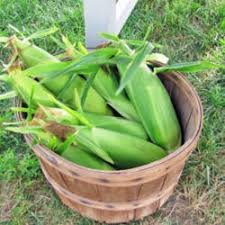Step-by-step guide to planting maize
Step 1: Field selection
There are three key aspects of field selection:
Altitude: Maize is a sub-tropical plant and the altitude at which it is grown is critical to its ability to mature.
Wherever the crop is grown above 140m there must be other factors to favour of growing at this height, such south-facing and free-draining soil.
Aspect: Aim for south-facing sites that are not too exposed.
Soil type: Maize needs a dry soil in the spring, but not a soil type that will dry out too much in late spring when the young plants are developing.
Growing maize on heavy, clay-type soils is probably the biggest handicap to trying to get the best out of this crop because of the difficulty in creating the correct seed-bed in the spring.
Medium loams that are easy to work in the spring, free-draining and will warm up early in the season to enable the young plants to get the best possible start are the most favoured.
Very free-draining and light, sandy soils can be too extreme.
Step 2: Seed-bed preparation
The aim is to achieve a deep, loose seed-bed. Maize is a free-rooting plant so there needs to be no restriction on root development in the early stages.
Crops that struggle with compaction then struggle to mature and achieve optimum yield.
Farms with heavy soils often need to winter plough to achieve the correct seed-bed in the spring. But if there is a wet March, water can hold under the furrows and can take a long time to dry out.
The topsoil can look dry and good, but it’s important to look deeper down and see what conditions are really like.
See also: Dairy farmer increases maize yields by upping seed rates
Crumblers and other machinery that will cultivate the ground to achieve the openness of the soil that maize requires for sowing should be used rather than any kit that will compact the bed. Being able to kick a foot through soils is a good guide.
Step 3: Drilling and sowing
The last 10 days of April should see all maize drilled. Forage maize has a finite season and dairy farmers growing maize in the North West need to be looking at a harvesting date of late October.
Crops drilled late and then facing a difficult growing season will be difficult to harvest and there will be issues over maturity.
There is an old adage that says for every day that the crop is sown into the month of May there will be a 1% loss in yield.
Maize must not be drilled any deeper than 4cm. Maize seed can come through from a deeper sowing, but if the soil conditions mean that it takes a long time to emerge, and then comes through into inclement spring weather, there will be losses.
Drill as shallow as possible within reason, and into moisture and a good tilth.
All sorts of drills have been evaluated for maize over the years, but most growers come back to precision drills and 76cm rows. Maize needs drilling slowly with one seed delivered every 11-13cm.
Step 4: Choosing a variety
This should be based on experience of what has already been grown or what is being grown successfully on farms where conditions are similar.
Yield is paramount for dairy farmers growing forage maize and must be a high priority in variety choice.
A modest target is 49.9t/ha (20t/acre) freshweight. Always select a variety that has the potential to give the level of maturity needed by the end of October.
Step 5: Weed control
A pre-emergent weed treatment can be used to combat weeds that may prove difficult to tackle after the crop has emerged.
Post-emergent treatments are the most economical and efficient way to manage weeds in a maize crop.
If there is “green over” weed cover on a field before the maize has emerged it can be necessary to spray post-emergent treatments within two weeks of drilling, or more commonly within three to four weeks of drilling, because the most efficient way of getting on top of weeds is in the early stages of growth.
Maize is very poor at competing with weeds in its earliest stages of development so this must be avoided.
Step 6: Crop nutrition
Nitrogen is the driver and a lot of crops just don’t get enough because of an over-estimation of what the slurry can provide.
Farmers need to know precisely what nutrients have been applied by slurry or FYM. Not enough consideration is given to the mid-season needs of the crop and the fact maize can put on 50% of its growth in July.
There is very little demand for nitrogen in the crop’s early life and yet that’s when it’s on offer to many crops.
Growers need to be more aware of the benefits of a mid-season foliar application of nitrogen, which can be applied without damaging the crop.
A strategy should be based on the sources of nitrogen to be applied and how the total needs of the crop can be delivered most efficiently so that the crop can tap into it when it’s at its most “hungry”.
Step 7: Pests and diseases
When maize follows grass there can be pest problems such as wire worms, but growers need to be aware that leather jacket and frit-fly sprays are banned after 31 March.
Although maize is a relatively pest-free crop to grow, the removal of these treatments may have an impact in the future.
European corn-borer has been a problem in the South West and eye-spot can also occur in some crops.
Insecticide dressings can be applied at drilling and there is a fungicide dressing to prevent rotting of the newly drilled seed.
These dressings break down after 21 days so there can be a risk where there is slow emergence of seed in cold, wet seed-beds.


